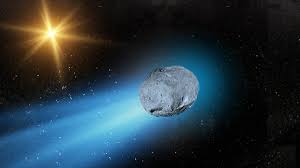SpaceX and NASA launch Crew-11 to ISS – what you should know

SpaceX Crew‑11 launches crew aboard Falcon 9 to the ISS. Picture Credit: Steve Nesius/Reuters
On August 1, 2025, SpaceX successfully launched its Crew‑11 mission from NASA’s Kennedy Space Center, sending a four‑person international team aboard the Falcon 9 rocket to the International Space Station. The mission, featuring NASA, Roscosmos, and JAXA astronauts, underscores deepening international space collaboration, coinciding with 25 years of continuous human presence on the ISS.
Launch Details & Weather Challenges
Originally scheduled for July 31, the Crew‑11 liftoff was postponed at T‑80 seconds due to thick cloud cover and safety protocols. After weather cleared, the launch proceeded on August 1 at 11:43 a.m. ET (15:43 GMT) aboard Falcon 9 Block 5, sending the Dragon capsule into orbit.
Meet the Crew: Expertise and First-Timers
The Crew‑11 team includes NASA astronauts Zena Cardman and Mike Fincke, along with Japan Aerospace Exploration Agency astronaut Kimiya Yui and Russian cosmonaut Oleg Platonov
- Zena Cardman and Oleg Platonov are on their first space missions
- Michael Fincke, a veteran, logs his fourth mission, with 381 days in orbit and nine spacewalks
- Kimiya Yui embarks on his second spaceflight
They will join Expedition 73/74 aboard the ISS and overlap briefly with their predecessors, Crew‑10, for a smooth handover.
Mission Duration: 6+ Month Stay Planned
Crew‑11 is expected to dock with the ISS on August 2, 2025 after a 39‑hour journey. While the standard six‑month mission is planned, NASA is evaluating an extension up to eight months, pending analysis of the Dragon capsule’s endurance. This shift aligns with new long‑duration mission planning amid budget pressures.
Strategic Cooperation Amid Geopolitical Tensions
The Crew‑11 launch occurred just after a rare face‑to‑face meeting between NASA’s acting Administrator Sean Duffy and Roscosmos chief Dmitry Bakanov, their first in-person diplomatic space engagement since 2018. Discussions included ISS seat-exchange agreements, decommissioning plans for the ISS in 2030, and lunar cooperation, reinforcing ongoing collaboration despite broader political rifts.
ISS 25-Year Anniversary & Research Agenda
Crew‑11’s mission coincides with the ISS’s 25th anniversary of uninterrupted human habitation, celebrated on November 2, 2025. The orbiting laboratory has served as a global research platform, advancing science, technology demonstrations, and deep space readiness. Crew‑11 will contribute to maintenance, experiments, and station upkeep during their tenure.
Mission Context & Strategic Importance
- Commercial Crew Program milestone: Crew‑11 marks SpaceX 11th operational NASA crew mission and the 19th crewed Crew Dragon flight.
- Adaptation over Boeing Starliner delays: Cardman and Fincke were reassigned after Boeing’s Starliner encountered technical setbacks. SpaceX continues to provide reliable crew transport.
- Safety amid staffing concerns: This mission faces internal pressures as NASA navigates workforce layoffs and safety criticism, but leadership asserts that crewed missions remain a priority.
READ ALSO
A grand vision: Why the white house ballroom costs $200 million
Why It Matters: What Crew‑11 Signals
- Progress: Maintains routine crew rotation to ISS despite technical challenges elsewhere.
- Diplomacy: Demonstrates continued U.S.-Russia-Japan cooperation despite broader geopolitical tensions.
- Longevity: Signals a shift toward longer missions, adaptive spacecraft usage, and efficient international coordination.
- Legacy: Aligns with 25 years of continuous human presence aboard the ISS, reinforcing the station’s global legacy.
A Milestone in International Spaceflight
SpaceX Crew‑11 launch represents more than a crew swap; it’s a symbol of resilience, diplomacy, and scientific continuity. As Zena Cardman, Mike Fincke, Kimiya Yui, and Oleg Platonov embark on this mission, they carry forward two decades of ISS legacy, and help set the stage for future lunar and Mars-bound exploration.


